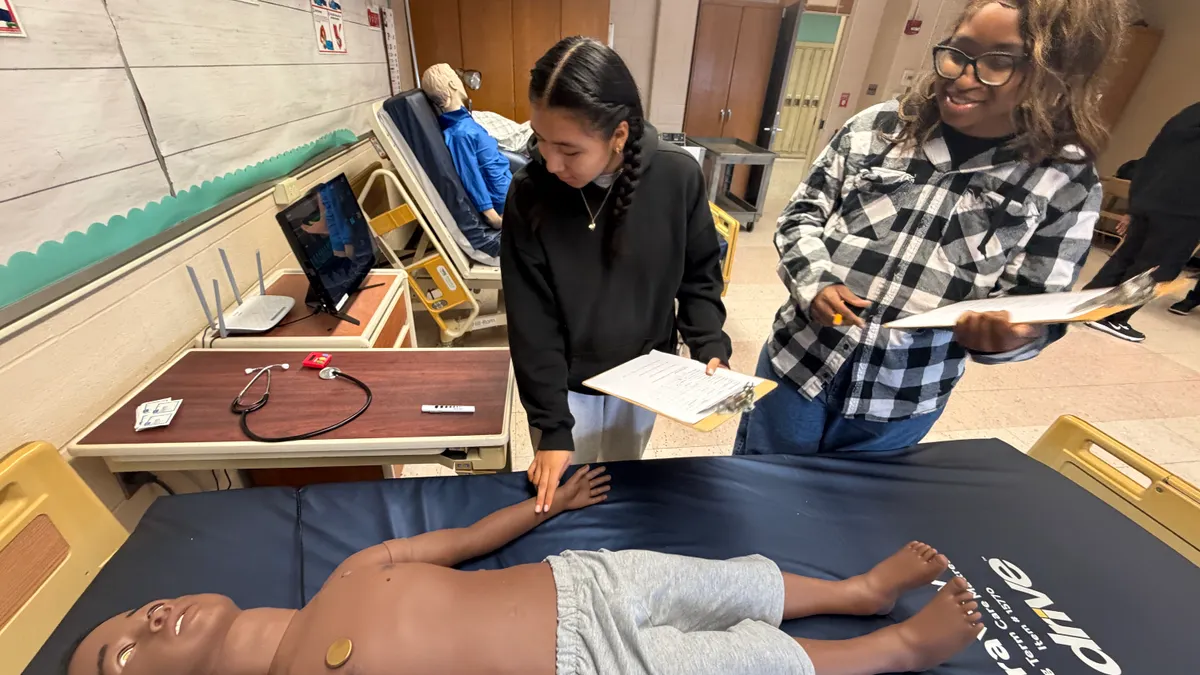In California’s Stockton Unified School District, character building is an everyday focus as students and teachers are provided monthly themes to explore around traits like empathy or kindness, with related activities woven into curricula.
October, for example, is the month for respect. And with a tie-in to National Bullying Prevention Month, students and educators talk about developing respect for themselves and others, and how that supports anti-bullying efforts.
To Jordan Blevins, school counselor for Stockton Unified’s K-8 schools, these monthly themes create a singular message: that every student is valued within the school community and outside their school's walls, too.
“Character education is showing our students how to be respectful and how to be kind,” said Blevins, who also serves on the board of directors for the California Association of School Counselors. "Those different character traits are important for being a human being and a successful member of society.”
While not a new concept, character education is very much in play in K-12 schools nationwide. The idea is to strengthen the school community by modeling traits that help students, educators and staff behave and connect with each other. Districts can employ several ways to explore and practice these skills and traits in the classroom — from focusing on serving as role models students can emulate and encouraging pupils to act as ambassadors themselves to developing programs at the district level to involve every student.
District-wide character programs
Bullying is a system-wide focus across Stockton. And while the district certainly applies resources to other concerns, many character-building exercises point back to addressing this concern. School counselors give lessons that tie into the character trait of the month, and morning announcements link to the character education theme.
In February, schools launch the “Great Kindness Challenge,” which includes “No One Eats Alone Day.” On that day, the district encourages students to buddy up with peers, people they may not know, or classmates who may be new to expand their community.
“It’s advertised as making new friends and improving school climate,” said Blevins. “We put up discussion questions on the projector in the cafeteria. It’s all about connections.”
According to experts, bullying has a harder time existing on-campus when students focus on bridging gaps and start to feel connected to all their classmates.
“Character education promotes skills and behaviors and sets up an environment and climate that is not compatible with bullying,” said Janet Urbanski, director of Safe and Humane Schools at Clemson University’s Institute of Family and Neighborhood Life. “So character education plays an important role in bullying prevention.”
Adults as role models
Another way to embed character education in curricula is to encourage adults, from teachers to staff, to model behavior they hope students will emulate including resiliency, courage, and empathy. Professional development opportunities can help with this, too.
That's one reason the National Institute for Excellence in Teaching launched the Accelerating Character Education Development program, which provides principals, supervisors and other school leaders a way to learn how to “lead positive school cultures in a complex environment,” said Hank Staggs, director of the Accelerating Character Education Development program.
The two-day pilot includes coaching, ongoing support and tools that can be brought back to schools. NIET believes character-building programs like these, which start with trusted adults at schools, help create a strong social-emotional and academic culture. Such efforts will ultimately in turn prevent bullying from occurring in the first place.
“Character education emphasizes positive relationships between students and adults,” Staggs said. “These relationships lead to greater trust between students and adults, and could help reduce the number of behavior incidents as well as reducing unreported incidents such as bullying.”
At Clemson University, principals can tap into the Olweus Bullying Prevention Program, which trains coaches who work with schools. Principals can hire trainers for their school site or send a staff member to run through the training themselves.
The Olweus program looks at existing bullying rules at a school or district and then helps to develop weekly or bi-weekly character education lessons alongside regular class meetings. Topics may include fairness, trust or empathy, but a key focus is ensuring adults — from the office staff to those working in the cafeteria — know how to respond to any bullying they witness or understand the steps to take if a student reports a bullying incident to them.
“Increasing that empathy, for example, is an important piece,” said Urbanski, who is one of the leaders of the OBPP program. “Because that will shift students into a defender mode rather than acting as a bystander doing nothing or ignoring it.”
Student ambassador programs
Student ambassador programs are another path for students to learn how to serve as role models. A focus may be on helping new or marginalized students link up with peers, or modeling anti-bullying behavior on social media and apps. It’s one thing when students hear about best practices in character from their teachers, but quite another when those suggestions come from pals.
One in four students report being bullied in school, according to survey data from nonprofit YouthTruth, which culled data from almost 80,000 public school students. Cyberbullying accounts for about one-quarter of those instances. And character education curriculum can also work to mitigate some of these incidents.
“Character education can provide a strategy to combat potential negative impacts of social media and help students to develop strategies for using media appropriately,” said Staggs.
While these programs and initiatives can also start at nearly any age, they will look different depending on the grade level, said Urbanski. She added that the majority of schools launch character education curricula with elementary school students, while others wait until middle school.
It’s harder, however, to begin this line of curricula in high school if students have not heard of or been introduced to the concept earlier. But even then, schools should see a shift in bullying concerns within a year or two. The earlier districts begin, the more substantial the results for schools — and the students themselves.
“It’s easier to start positive habits with younger students than those in the 11th or 12th grade,” Urbanski said. “The sooner bullying prevention is introduced, the better.”



















